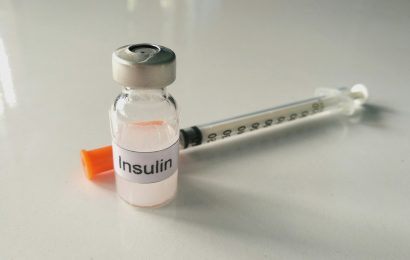Bumps, blisters, scratches, and cuts are a fact of life. For the most part, slapping on a Band-Aid or dabbing some antibiotic ointment does the trick. But if you have diabetes, even the simplest scratch or cut can quickly snowball into an extremely serious situation if you’re not extra careful. Ignoring a cut or not treating it the right way, for example, can slow healing, lead to infection, and, in the worst case, possibly result in amputation. The good news? There are steps that you can take to nip possible problems in the bud. Read on to learn how to properly take care of a wound.
Do: Check your feet every day
Look for cuts, blisters, red spots, or swelling. This is especially important to do if you have any loss of sensation in your feet or legs due to diabetic neuropathy. More than 80 percent of amputations start with a foot ulcer. For this reason, make foot checks part of your daily routine — say, before you go to bed every night. If you notice a cut that doesn’t seem to be healing, or redness that is spreading, call your doctor as soon as you can.
Tip:
If you have trouble seeing or reaching your feet, ask someone to check your feet for you. Or, use a mirror to help you see the bottom of your feet.
Don’t: Perform any type of “bathroom surgery”
Leave that to the experts. There are different types of wounds, and some wounds require a process called “debridement,” which is the removal of dead tissue. Debridement helps with wound drainage and healing, and allows for closer inspection. As tempting as it may be to pick or cut off dead skin yourself, avoid doing this at all cost. You can easily end up damaging a blood vessel and worsening the problem.
Tip:
Never cut corns or calluses or use an acid-based wart remover. Gently use a pumice stone, or, better yet, visit a podiatrist to get any foot issues properly taken care of.
Do: Take a “load off”
If you have a wound on your foot or leg, you may need to practice “pressure off-loading,” which, simply put, means staying off your feet. Because that’s easier said than done, your doctor may prescribe a total contact cast to evenly redistribute pressure throughout the leg. Other safe options for remaining mobile include wearing a boot, a removable cast-walker, or a healing sandal. Not wearing a prescribed off-loading device can significantly slow wound healing, so follow doctor’s orders!
Tip:
Forget about hobbling around on a “wounded” foot or leg. Take the time to put on your off-loading device, even if it’s just to go to another room.
Don’t…forget to change your wound dressings or bandages.
The right dressing is crucial for wound healing, as it can help maintain the appropriate level of moisture, and allow the wound to drain and heal. Not changing your dressings often enough can affect the moisture balance and delay healing.
Tip:
Don’t leave the doctor’s office without a wound “treatment plan.” This means that you know what type of dressing to use, how to apply it, and how often to change it.
Do: Ask your doctor about other options for stubborn wounds that refuse to go away
Some wounds are difficult to heal. If debridement, antibiotics, and pressure off-loading aren’t doing the job, it may be time to consider alternatives. Hyperbaric oxygen therapy, commonly used to treat decompression sickness from scuba diving, increases the oxygen supply in the blood, which, in turn, promotes wound healing. Skin substitutes are another option: they protect the wound, provide a clean, moist environment, and keep bacteria out. Skin substitutes may be temporary or permanent, and can be natural (from cadaver or pig skin), or synthetic (made of silicone). Another option is maggot (fly larvae) therapy. While this seems like it’s straight out of a horror movie, maggots have been successfully used to debride wounds and burns all over the body. Maggots love munching on dead tissue, and they leave healthy tissue alone. Using maggots helps increase oxygen to the wound and enhances cellular growth. If you can get over the “ick” factor, maggot therapy could be a viable option for a non-healing wound.
Tip:
Ask your doctor about other ways to deal with a wound that’s not healing. Be sure to check with your health plan to find out which therapies they will or won’t cover.
Don’t: Overlook other factors that can help you heal faster
Dealing with a wound is challenging on top of everything else in your life. But there are other steps that you can take to speed the process along. Focus on getting and keeping your blood sugars within your target range, as high blood sugars will slow the healing process. Eat a healthful diet that contains enough calories, protein, and vitamins and minerals, including vitamin C and zinc, that are key for would healing. Don’t smoke, as it can weaken your immune system and prevent oxygen from getting to the wound to help it heal.
Tip:
Meet with a diabetes educator to review your blood sugars and your diabetes treatment plan. Learn what steps you can take to best manage your diabetes so that your wound heals quickly.
Want to learn more about foot care? Read “Foot Care Q&A: Part 1,” “Foot Care Q&A: Part 2,” and “Improving Blood Flow to the Feet.”





